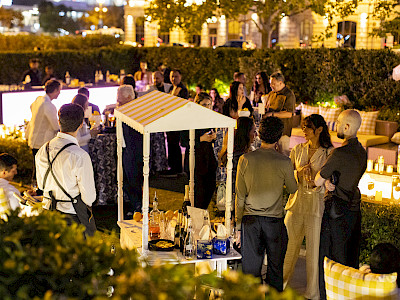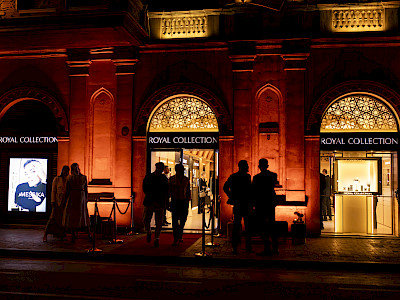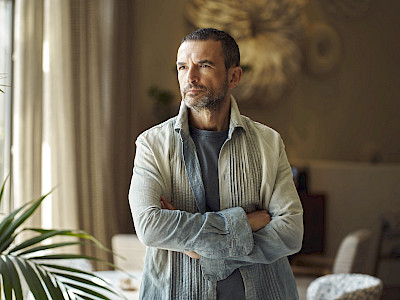
Somewhere between London and Paris, while crossing the Channel Tunnel, I was pondering crocodiles, panthers, wolves, elephants and King Kongs — the eye-catching, somewhat naïve and pop-artesque creatures of Richard Orlinski. four hours later, the French sculptor, DJ, and designer with Polish roots — a man who seems to be perpetually marching forward with the wind always at his back — met me in his chic Paris apartment for what proved to be a rather intimate and candid interview.
Hell-bent on creating his own imaginary worlds, Monsieur Orlinski seems to embody the words of Italian maestro Federico Fellini, “You have to live spherically — in many directions… Never lose your childish enthusiasm — and things will come your way.”
Apologising for keeping me waiting, while he was working on his upcoming theatre production, this charming, multifaceted artist with a certain playfulness to his character, and an almost childlike enthusiasm, recounts digging his very own channel into the art world, as well as the obstacles he faced along the way — the way to become the bestselling French contemporary artist in the world.
Richard, despite your iconic status, very little is known about your background. It would be nice to hear your story up until the moment you first began thinking of yourself as an artist.
I was 4 years old when I started sculpting (laughing).
I was doing elephants, hippopotamus, crocodiles, all from a clay cooked in an oven, offering my creations to my teachers and classmates. It was a lifetime hobby. Although, when I was 11, I have paused sculpting for good 10 years because I thought it was not considered “cool”. I turned my attention to music. Later in life, I became involved in real estate, bought and designed houses, I was kind of an architect without a diploma.
However, I knew that I was living a wrong life. I was not feeling it. I wanted to live with something I love. So, I have stopped my business activities, even though I was doing really well. As a kid, I was very creative, doing theatre, movie, music, sculpture, but I also knew it is very difficult to become an artist. Only a few made their dream come true. I studied and worked hard, became successful in another industry, built a family, and, in the end, I returned to my first love. I became a professional sculptor in 2004, when I first exhibited for public and sold my works.
…And in 2010, ArtPrice named you the second bestselling French contemporary artist in the world. Since 2015, you are the best-selling French contemporary artist. You’re represented by over 90 galleries! My question is simple: what is your secret?
My secret is simple: you have to work hard. I do not believe in luck, I believe in work. You put your energy into one project, you find a way to put things together, and things happen. The sun is there for everybody.
For me, it was a fight. I did not start as a young artist, I came from a different world, and people were not expecting me. In the world of art, things do not happen like that. You do not just knock the door and say, “Hello, I’m a new artist!”
People wanted to stop me because I did not follow the unwritten rules. I did not follow the paths that each artist has to follow to reach a certain level. The ‘inteligência’ is very powerful here in France, and they want to stop you if you do not play by their rules.
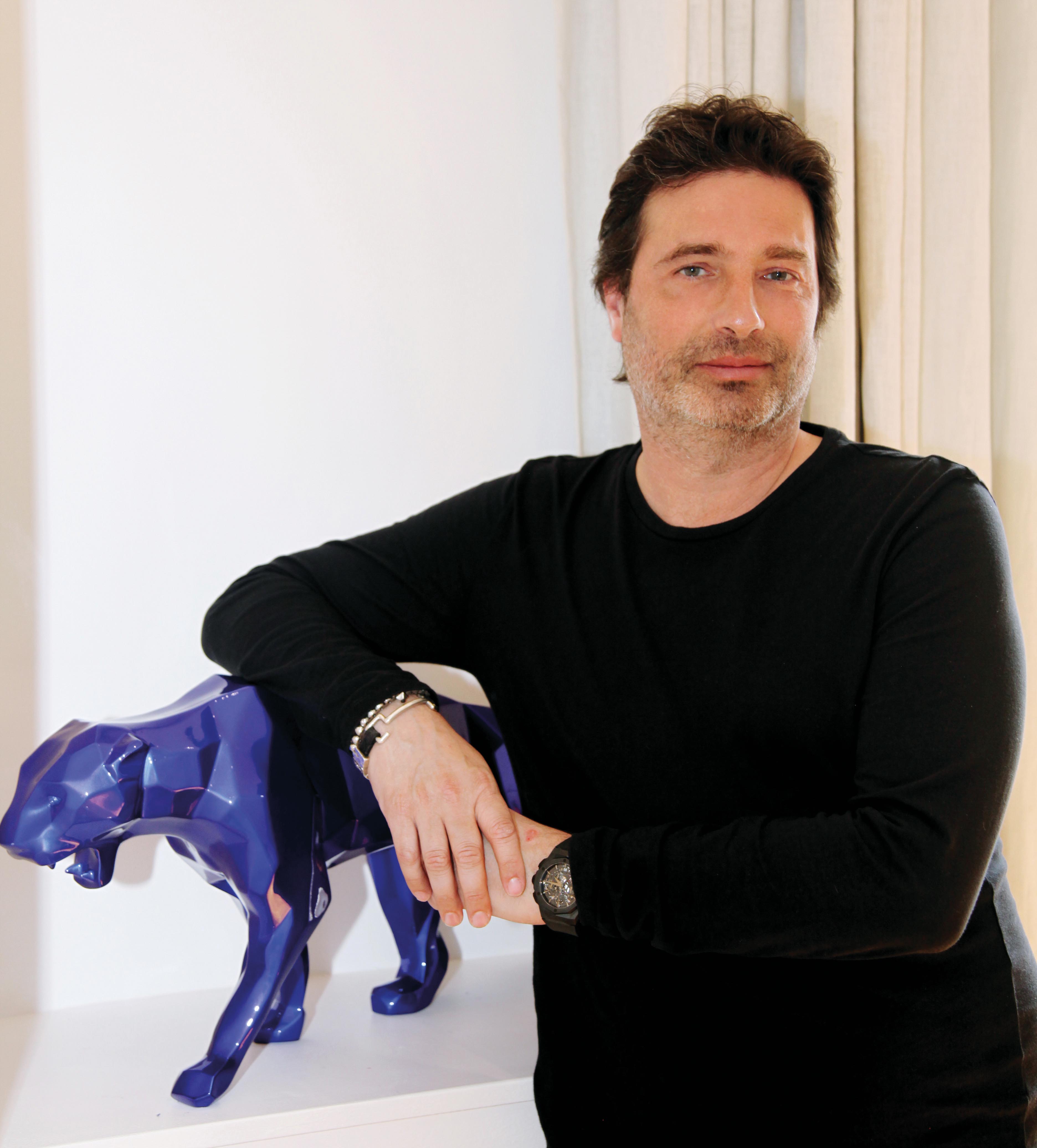
In your book “Breaking the Codes” you refer to yourself as an ‘Atypical artist’, and to your style as ‘Born Wild’ — “a rule-breaking concept”. Do you mean to say, that you’re breaking the codes of some sort of a system?
Exactly! My art is very democratic; it is for everybody. I install everywhere, from the Alps to TV shows; the system disagrees with these views of mine. They prefer to keep art less accessible to wider audience. In France, you cannot be an exbusinessman and end up being an artist. They do not accept it.
This would make you a public artist, who sees his mission in bringing art into our daily life?
Yes, for free!
As a people’s artist, what would be your ideal public commission?
Azerbaijan (smiling).
Let’s discuss it then. How would you feel about bringing your art to Baku? Which pieces do you think would suit our capital the best?
It is a matter of feeling, you know. I need to feel the place, the streets of Baku, see what is happening, get inspired by it. I work a lot with feelings, and to be honest, in art, anything can go anywhere. You can install something very contemporary in an old castle, for instance.
The wedding of a subject and a place is always a happy process. I place my artworks in the most unexpected locations, and it fits just okay. My conception of art is that you can place anything anywhere. By the way, I am going to Russia for the World Cup; I can pass by Baku on my way back (laughing).
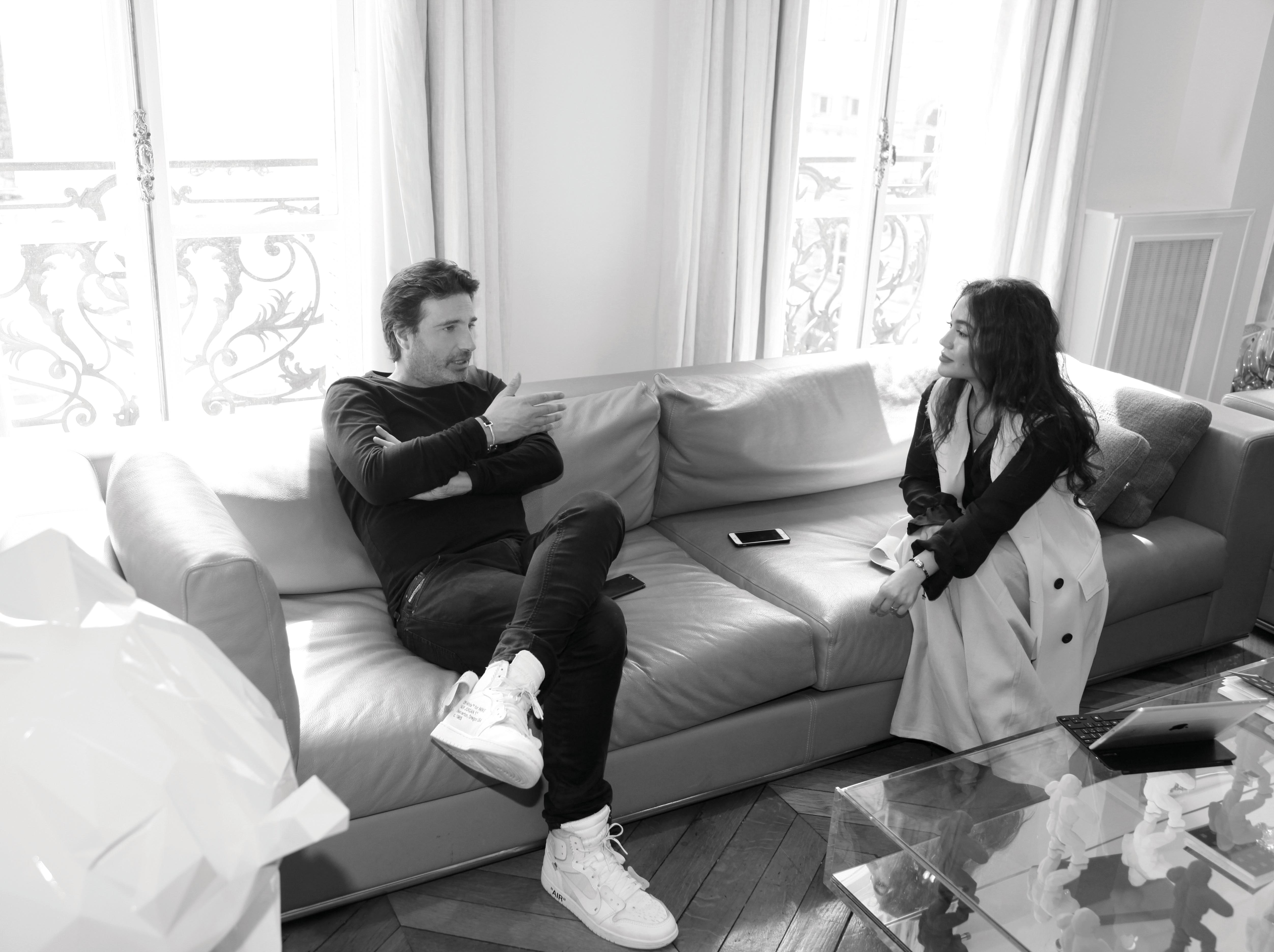
What do you think about the region in general?
I am very interested in that region. During the Cold War, as a kid, I was so into those spy movies, spies from the Eastern Bloc and those from the Western Bloc. I have even made a sculpture of a Russian pilot. When they broke the wall (as Pink Floyd sang) and the Union collapsed, young people started travelling there. A new world has opened up to us; it became more accessiz ble, more open and free. It has changed very rapidly and I still have this fascination for the region…
Let’s get back to your work. Imagine someone entering your gallery, or passing one of your outdoor installations, what kind of emotions do you hope to elicit? What do you hope they take away from their experience?
Only an emotion. I do not want to tell anybody what he or she have to feel or think. It is a freedom of feelings. Within one sculpture, you can find five people thinking differently. It does not matter to me what the public thinks, as long as they experience any emotion — this is my goal, my target.
My best audience is kids, even two-year-old children.
They love my sculptures. I have a special relation with kids; they love the colours, the expressions. I do not tell them what to feel.
It must be hard, once you get to the top, to stay there. Do you ever feel the pressure?
Yes, of course. However, this pressure is not to come first or second. My pressure is the end of life. There is still so much to do, and I am not 20 years old now. In one year, I have to do something that takes 10 years for others. I have to speed up. Many artists take from two to three years to make one sculpture. I sometimes make two pieces in a month.
I am always running forward, and I feel the stress. Sometimes it is positive, sometimes negative, but there is something pushing me from the back. I think, when there is a good wind, you have to follow it.
I also make many other things: music, design, theatre. A few months ago, I have founded the ‘Orlinski design’ — now we have a lab. For me, art is everything; it is not just one media. When you have some kind of sensitivity, you can express yourself in many different ways.
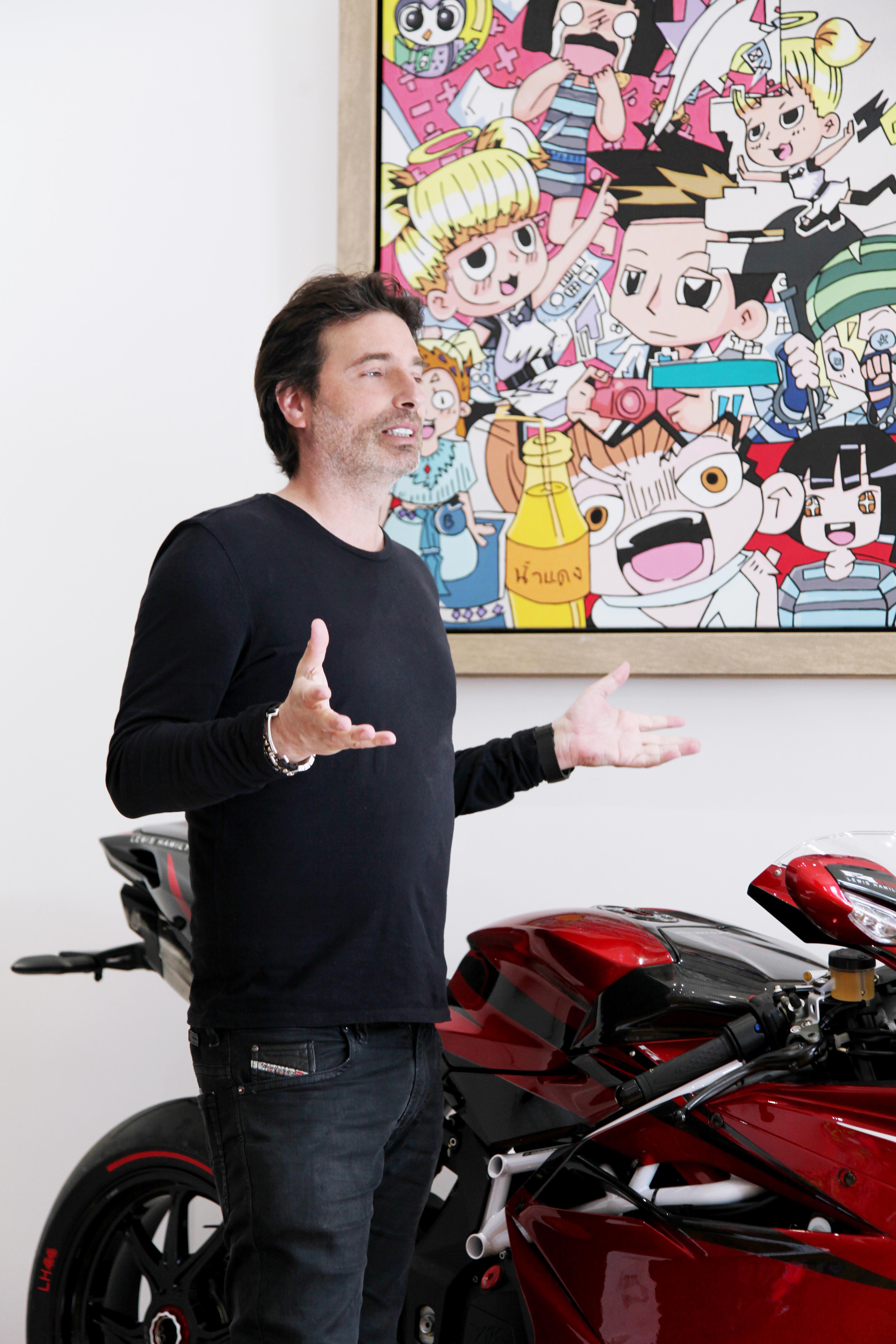
You’re a sculptor, DJ, designer, and you’re constantly putting out work! Do you consider yourself as a workaholic? How do you balance life and work?
It is true, I am a workaholic. I have four kids, three boys and a girl; I take them everywhere, where I am working. I did the same even when they were much younger. I share everything with them, so my work and private life are very much connected, I do not have a problem with that.
How would you feel if your kids also went into art?
One of them actually is studying film, playing music, guitar, and piano. I am not telling them to become artists because it is difficult. I would prefer they study something else, have a ‘real’ job, and after that they can make art, why not.
Do you think it’s difficult being an artist?
Yes, it is very difficult. How many succeeded?
Five to ten?! Very few...
You’re quite active on Instagram. Do you think social media is a strong marketing tool for emerging artists — a bridge between the artist and the public? Artists are often taught that they shouldn’t market themselves, stick to creating art for art’s sake, and if their art is good, then that’s enough. Is that really enough?
PR and social media are very important; it is not possible to live without them in our era. In France, they think the real artist has to be poor, sad, and alone in the studio (f*** that). We have to break those stereotypes! Fifty years ago, there were no Facebook, Instagram, or platforms like that; today you can share your art with millions of people. We are very lucky to have that, and we have to use it.
I’ve noticed that when viewing contemporary art, many say: “I can do the same thing”. Often they add “better”. As a rule, people don’t allow for things they don’t understand. What do you think about contemporary art and contemporary art market? There’s an opinion that the super-wealthy only support the blue chip art, while most living artists are struggling.
The art market is like any other market with its own rules, operated by powerful people. The rest just fighting each other and struggling. The contemporary art can be snobbish. It is funny, you go to an art fair and ask people if they know this artist. They all say ‘yes’, but they have no idea what you are talking about.
I do not want to judge, I like art that gives me feelings. Your words are funny and true, people see contemporary art and say, “I can do the same!” Great! Do it if you can. People will love your work, or they will hate it. This does not matter; what matters is doing something.
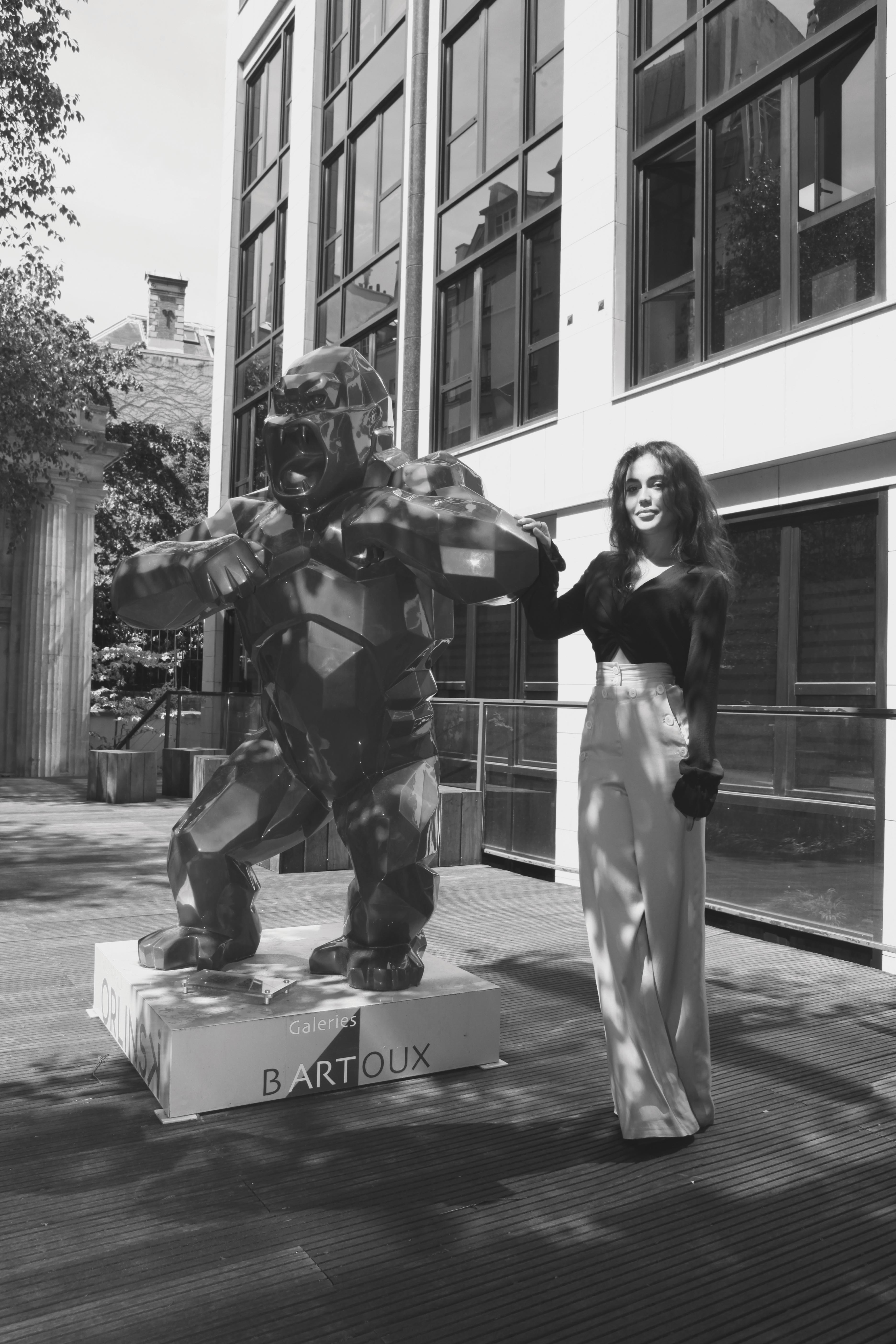
What influences were you exposed to as a young artist that helped shape or expand your work?
I admire Andy Warhol, his background in publicity made him look at things differently. He was not an artist in the very beginning. In a way, he was laughing at art. It is a way to say to other artists, “Look, this is also an art!” With the foundation of Pop art, he made a revolution, and his factory is worthy of admiration. He created the hub, the place to be. If we had internet at that time, he would have been even bigger. I feel something very special towards him; he definitely created something very important.
Let’s talk about business. They say that the business side of art is an art form itself. How do you reconcile the two? Is there a contradiction in how thin is that line between creating art and selling it?
It is very simple: I create art to sell it; otherwise, it dies. Some collectors commission limited editions, only one of a kind piece. I think it is wrong. It is not good even for its value. You make a sculpture, you put it in your house, and nobody knows it exists. If that sculpture has a sister piece, somewhere in the museum, another collection or outdoors, where people can see it, this piece of art lives. The unique pieces are not good for evolution.
Prior to our interview, I visited the Paris gallery you opened last year on rue du Faubourg Saint- Honoré and dedicated entirely to your work. Is that working out?
It is very good. People are happy to have all pieces in one space; they get to see the whole picture. We have just opened another one in St.Tropez this weekend, and one in Singapore a few days ago.
How do you expect your gallery to fare in Singapore?
I already had some pieces shown in galleries in Singapore, but just like in Paris, it would be good to have them all in one space. My gallery in Paris is just a step one. My target is to make a place, where people can spend time; a place with a bar, music, live shows. I am going to open a huge place in Mexico very soon, where kids can come and play, enjoy the art without the necessity to buy it. I see art more like a concept, where visitors can live the atmosphere. I want to do that in Baku as well (laughing).
Can you talk me through your creative process from the moment you get inspired and the idea is born, to presenting your work to the public? Which stage do you find the most challenging? Many see you as a superhero. Do you often face challenges?
Of course, I do. I work in a team, allowing everyone to express their opinions. I do not like to work alone. The process of creation is very different from what it was before. Now we do everything on a computer, that creates a 3D vision, then the piece is generated manually in the studios.
I get a final touch, of course. My decisions on colour and size are always last minute, depending on inspiration.
I do not start with ‘A’, ‘B’ and ‘C’; I can start with ‘C’ or ‘B’. Even the book I published is upside down: there is no chronology, no beginning and no end, but one big mess like it is in my mind.
What inspires and stimulates your mind?
It can be anything. Right now, it can be this situation, us talking, today’s weather, the country, the world. There is no strict process; it is a freedom, no rules.
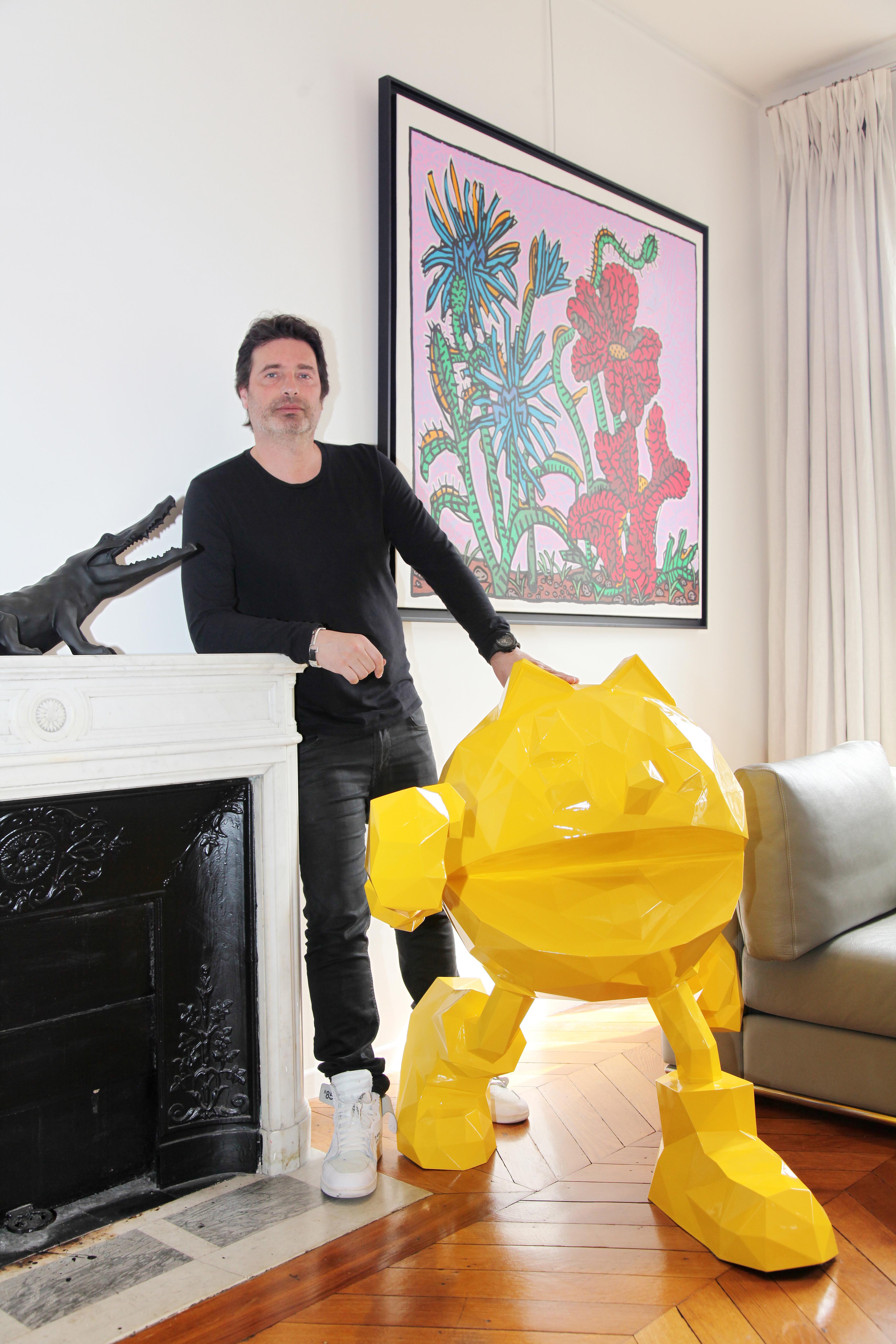
You’ve recently collaborated with Swiss watchmaker Hublot on what look like ‘time-sculptures’…
We have started from the scratch.
What is interesting with Hublot is that they allowed me to do what I want. Except for the mechanics, I designed everything. It may be the first brand in the world that allowed an artist to change the box. I am really proud of that. I came to Hublot with all my plans and drawings; I am a perfectionist, you know. All models were sold out in one hour in Basel city, and now we are working on other models.
So, what’s next for Richard Orlinski?
Other collaborations. I think when you do something with a brand it is like a wedding: your DNAs unite, and then something beautiful is born. I receive many offers, but I do not want to make collaboration just for the sake of it. I want to work with a brand that feels me and which I feel myself.
I want something genuine. You have to be genuine with people to be successful in the collaboration because people feel it. I want people to be excited about what we are making together. I am happy to collaborate with any brand as long as there is mutual respect, desire for a good quality product, the right set of emotions and a common story to tell. I have already collaborated with Kooples, Daum, Christofle .
In 1964, Hemingway wrote, “If you are lucky enough to have lived in Paris as a young man, then wherever you go for the rest of your life, it stays with you, for Paris is a moveable feast.” What are your relations with Paris? Is it really the feast?
It is an amazing city with a special atmosphere; you cannot find this feeling in other countries. I am very proud to live in this city, I travel a lot all over the world, but I do not like to be long away from Paris. Yet, I think Hemingway meant London or New York (laughing), they are moving faster.
Finally, some words for Nargis Magazine and its readers.
I wish you very long life, success, happiness, and only the best. I am very excited to visit Baku because for me it is like a secret. I know very little about it, so it will be an interesting discovery. And I love discovering things, like a kid.
Interview Farah Pirieva
Photo Alexandra Leroy

